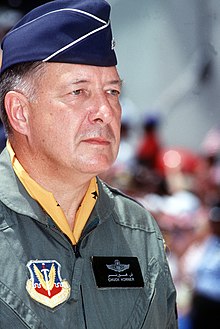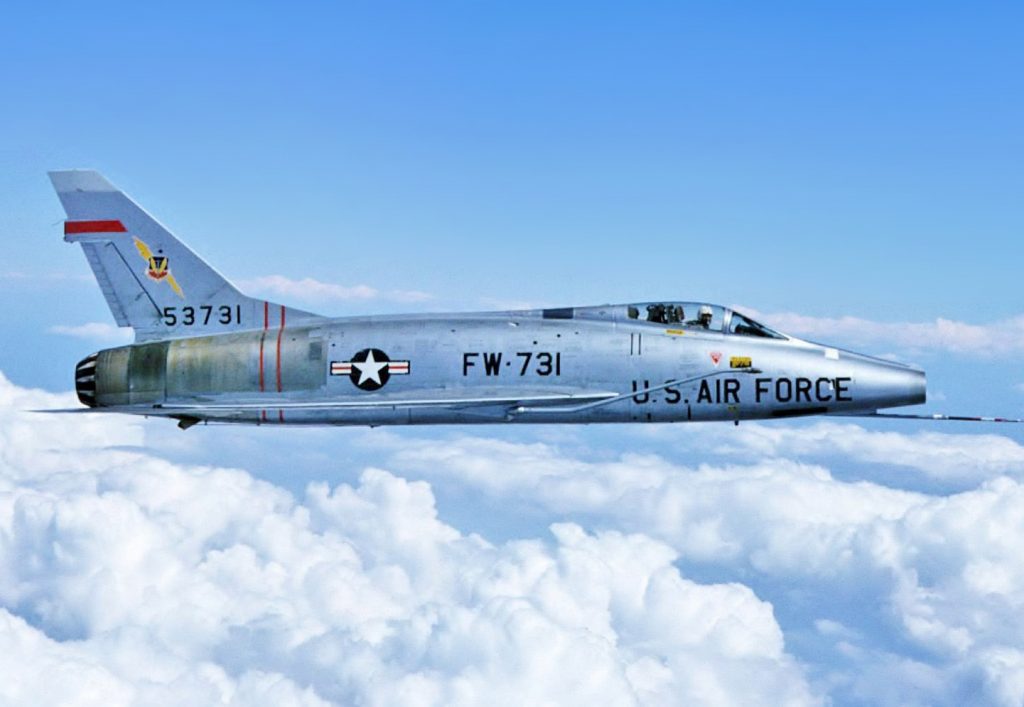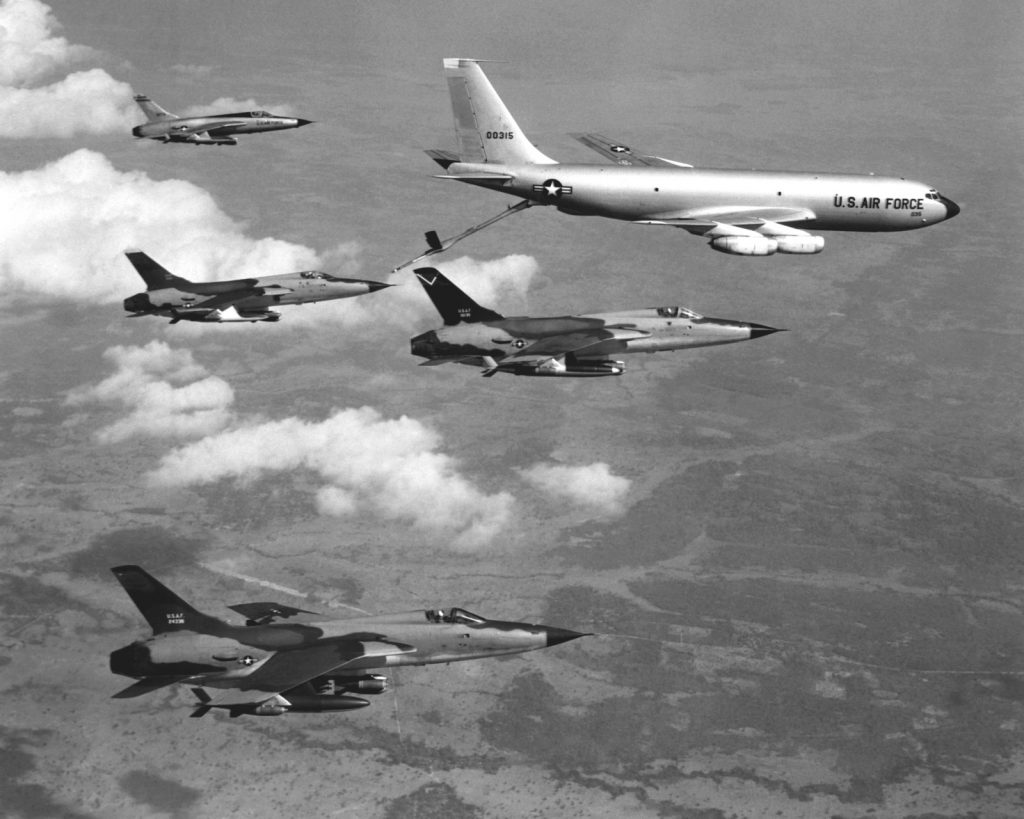
We continue to look back on the 30th Anniversary of the First Gulf War. Today’s spotlight is on General Horner: Air Commander of the First Gulf War
Early Years
Charles Albert Horner was born and raised in the cornfields of Iowa. He attended the University of Iowa and as a Hawkeye was part of the Air Force ROTC program. He received his commission upon graduation in 1958 and was off for preflight training/screening at Spence AFB (Georgia) and then Laredo AFB in Texas. Both facilities are now closed.
Fighter Pilot
Horner earned his pilot wings and a spot in the F-100 Super Sabre and found himself at RAF Lakenheath as a young lieutenant and then captain. These were the days when the Century Series aircraft were filling the sky.
He eventually served two tours in the air over Vietnam while his future bosses Colin Powell and Norman Schwarzkopf were officers on the ground. Horner flew the F-105 Thunderchief out of Korat Royal Thai AFB, Thailand in 1965. He returned in 1967 as a Wild Weasel pilot in the F-105, again, out of Korat.
Senior Officer
Horner did all the normal schooling and made his way up the ranks. He commanded Fighter Wings at both Luke AFB and Nellis. Soon after leaving Nellis, Horner pinned on his first star.
Central Command
In March of 1987 Chuck Horner was made Commander of the 9th Air Force. With that position also came Commander, U.S. Central Command Air Forces. When the Iraqis invaded Kuwait in August 1990, Horner was the man to lead the air activities and campaigns of Operations Desert Shield and Desert Storm. In this interview he tells how plans were already underway due to the leadership of Schwarzkopf.
A Decisive Man
Horner drew up the Allied Air Strategy based heavily on the work of Colonel John Warden. The central premise was to first take out the Iraqi’s Central Command and Control structure. Due to their heavy reliance on centralized command coming from Saddam Hussein, this move went a long way towards securing a swift allied victory.
One day into the war, the Iraqi’s began to fire missiles into Israel, hoping to lure the Jewish State into the Conflict and fracture the Allied coalition, which included Saudi Arabi, and which enjoyed the support of other Islamic nations.
The Israeli’s showed remarkable constraint but urged the Americans to step up the bombing campaign. One night, Horner looked at a high-ranking intelligence officer and asked him what targets would satisfy the Israelis. The intelligence officer looked bewildered, stuttered, and stammered and then went silent. Horner turned to a junior officer. He looked at a young captain, “Where do we bomb”?
The captain calmly pointed at several targets. “If we hit these targets it will satisfy the Israeli’s.” Horner gave the command for those targets. The high-ranking officer was gone the next day
A Humorous Story
The Air Campaign was directed from a facility separate from General Schwarzkopf’s Command Center. The Air Staff was essentially in a Quonset hut with desks lined in three columns. My friend, also a young captain, sat three or four desks behind General Horner. Each desk had a telephone. Daily the phone would ring on the captain’s desk.
“I want to talk to Horner” boomed Norman Schwarzkopf.
Each day the captain would go and get General Horner and bring him to the phone (it was a land line with wires). One day my friend decided it would be quicker for General Schwarzkopf if he just called General Horner’s desk directly.
So, the next day when General Schwarzkopf called, my friend said, “Sir, General Horner’s direct line is…”
Before he could finish the sentence, Schwarzkopf bellowed, “I don’t want his number, give me Horner now”.
That was the last time the captain suggested the direct line.
After the Gulf
By all accounts, military experts hail the air campaign in the First Gulf War as a masterpiece of success. Due to the strategic approach, ground causalities, when the ground invasion began on February 24, were held to a minimum. This allowed the Coalition to claim victory on the ground in 100 hours.
One year later, General Charles Horner was awarded his fourth star and the Command of the North American Aerospace Defense Command and US Space Command at Peterson AFB, Colorado. He retired from that position on October 1, 1994. For a review of his 36-year career see this site and the video piece on his career.
Genera Chuck Horner truly excelled as the Air Commander of the First Gulf War.






